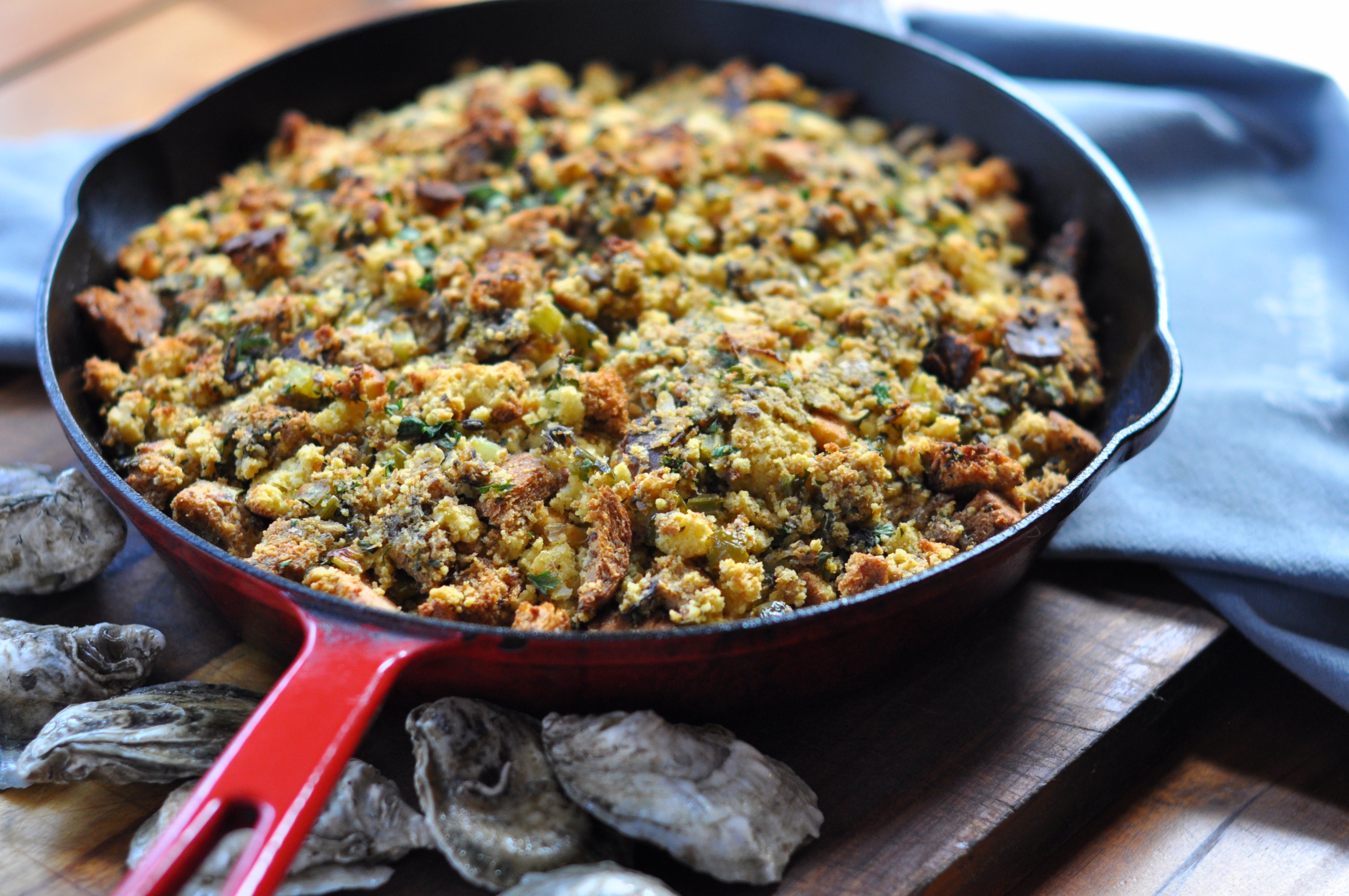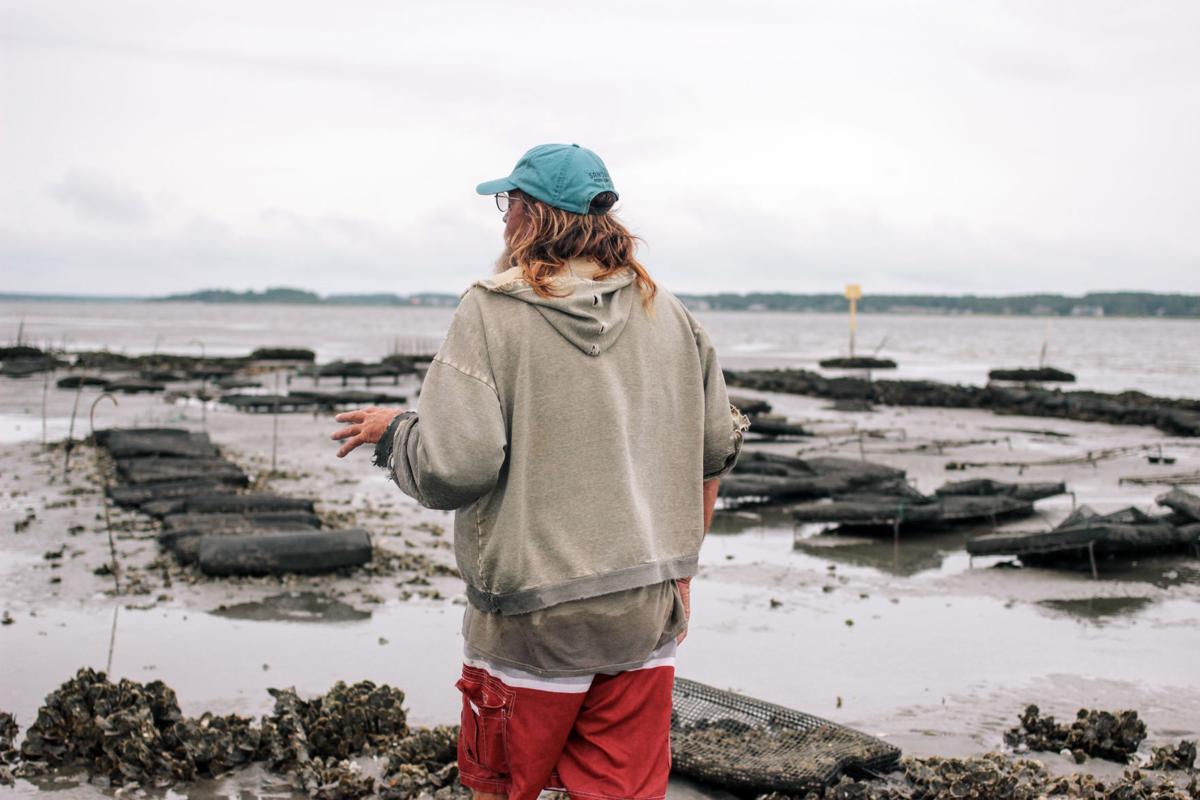Low Impact is High Impact: The Story of Stella Mar Oysters

Warwick and I rolled up to the Harbor Point docks in Stamford, Connecticut, coffees in hand, on a warm, sunny Wednesday morning. As we arrived, we snooped around the docks until we overheard the clacking of machinery and the gushing sound of water. As we stood on the dock and waived at the crew below, a man in a white tee and jeans approached to our left with a warm, welcoming hello. Steve Schafer, co-owner of Stella Mar Oyster Co., launched right into conversation as we gazed upon a bustling team with a rhythm like no other.
The Stella Mar Crew
Steve walked me through all the attributes of his team. “Isabel is the man. He knows what it takes to get things done… Rolando has the same heart… Delroy is fabulous. Miguel has a big goofy grin and man, the guy can splice…Everyone plays a great part in this family.”
After the conversation was waning, it was time to get started for the day and jump aboard the Paige Lane. Before we headed down, we noticed a man strolling towards the boat with bits of gear in hand and a swagger like no other. Steve starts chuckling, “take a look at that stride. Come on down, I want you to meet Jardar.”
Jardar Nygaard is Steve’s partner, who exudes heart and true grit. Both Steve and Jardar work hand in hand out on the water with the team in great form, and their passion for the business focuses on a truly boutique product.
“We want an artisanal oyster,” said Steve, as we began to ride out to the lease, about a mile off the coast of Shippan Point. “…A boutique oyster grown here in the Long Island Sound, in the deep water of Connecticut. We’re trying to break that mold, one customer at a time.“
Redefining the Connecticut Oyster
Stella Mar’s goal is to redefine the Connecticut oyster. They’re using an off-bottom, vertical grow out method. The design of their gear minimizes benthic impact, while the vertical farming technique allows the oysters to experience a greater range of nutrients in the water column in the Long Island Sound. This gives them very plump meats and a full range of flavor profiles.
“When you ask a lot of other oyster farmers, most will say ‘deep water’ is up to their shoulders at high tide. Deep water to us is 30 feet,” explained Steve.
Their farming technique and equipment focuses on high production without reaching full carrying capacity or putting pressure on the ecosystem. This “low impact” process allows Stella Mar to farm while also delivering a “high impact” back to the environment.
“We have seen a wonderland of essential habitat evolve for other species to live,” said Jardar. Both Steve and Jardar are passionate about enhancing biodiversity and giving back more than they take to the environment.
The Stella Mar Oyster: Process & Flavor Profile
Upon reaching the oysters, we watched closely as the Paige Lane, in all her glory, pulled up the first massive block of equipment, which allows for about 1440 square feet of growing space for every 3 square feet of bottom impact. Steve picked a few oysters up to show us the new growth at the end of the oysters. The shells were bronze and gold, and the edges gave the shells a nice feathery, pink contour. Jardar and Steve discussed how the tumbling chipped off some of the sharp growth to help them build thicker, more durable shells.
After admiring the outside, we had to taste a few. Jardar started shucking as Warwick and I huddled around, mouths watering. “A lot of guys work the knife really hard,” said Jardar. “It’ll pop. Just get in there and wait for a second. Don’t turn the knife, just slice the knife through. Even just the width of the blade can be enough.”
The oysters had a delicious brine, right off the bat. The chew was creamy and mineral. The finish was sweet and velvety. Steve laughed about how his oysters have been described in the past and added with a pinch of sarcasm, we’d rather have it read, “a slight southern Mexico tequila finish.” I must say, however it’s described, it’s a darn good oyster.
I asked Steve if his two young children liked oysters. He said that a great moment was when his son, Sam, and he were down on the beach where Steve had planted him an oyster garden, so they could go harvest whenever they wanted.
“Sam asked to try one. I cracked one open and handed it to him. He looked at it and put it in his mouth, chewed it like a respectable oyster eater and he looked pleased. He said it was really good… Salty at first, and then sweet. I said, ‘you’re hired’!”
It’s also very well worth mentioning that Steve’s daughter’s name is Stella. I bet you can guess the special meaning behind the name, Stella Mar.
We Call it “Cradle”
We watched as the crew systemically washed, tumbled, graded, and reset the oysters into their gear, which was then lowered back into the water. All were marked by a couple of yellow buoys and numbered for the team to keep track of the progress.
As we discussed the process, Jardar made a point to distinguish how they prefer to view their gear. “At no point is it called a cage. Call it a ‘cradle’. For some reason it bothers me, the words tray and frame. We like ‘cradle’.“
Getting Personal: Steve and Jardar
It was a full morning on the farm of learning, taking in the clean air of the Sound, watching Jardar dive off the back of the boat to check the gear, and getting some really great snaps. As we headed back inland with Steve, we discussed the more personal beginnings of the business.
Steve and Jardar both have great stories that led them to where they are today. Jardar moved from Norway when he was just 4 years old, and by the time he was a teenager, he began working in a seafood market. His father owned one of the first-ever salmon farming operations in the US, so his childhood was always inclusive of the industry. After selling a seafood market himself, Jardar began acquiring shellfish lots and expanding into the aquaculture business.
Steve had a different childhood and career path. He was a Mid-western boy who took a liking to digging for clams as a teenager during family summers in Westport. He went into the golf business, but later developed a longing to get into the seafood industry – so much so that he offered to work a seafood counter for free. This led to payroll, media opportunities, and eventually other positions focused on sustainability and regional fishery management for the state of New York.
Then, on his way to an interview for another aquaculture business, he called Jardar out of the blue. Talk about destiny. They were old friends who had talked about working together at some point, and it finally became a moment in time; a fortuitous opportunity. Steve invested in Jardar’s business as a partner, wrote a business plan, and Stella Mar was born.
Making a Difference in the Industry

We ended the afternoon by stopping into Prime, a restaurant across from where the rest of Stella Mar’s fleet were moored. Jardar joined us shortly after finishing a few more tasks on the boat. You can tell how well these two work for each other – they were finishing each other’s sentences, recognizing each other’s strengths, and conveying their excitement to get their story just right. It is also important to mention how much they care about the industry and are working to make a difference. Both Jardar and Steve are actively involved in Connecticut organizations and work with multiple federal, state, and municipal bodies to enhance, protect, and support the shellfish environment in Connecticut. Check out an organization they love to support, SoundWaters. It engages and educates children on how to protect the waters of the Long Island Sound.
Wired for Work
As lunch came to an end, we headed back to the other side of the harbor by the fleet. I was able to catch a final glimpse of the crew’s activity back on the boat. They were culling up a storm. It was an amazing thing to watch – their fluid, rhythmic approach to the job was absolutely hypnotizing. Steve also shared a couple of other projects underway with some of the boats.
“We’re wired for work,” said Steve. “If you’re objective driven, you will get to where you are going. We accept the work, because we have seen the proof. Our organic growth is strong, and we keep expanding. But we also take advantage of the plateau’s that come, to really perfect what we’re doing.”
You can read more about Stella Mar Oysters on their website, www.stellmaroysters.com. Yours truly, Lady Oyster, helped write the content. 🙂 You can also follow them on Instagram at @stellamaroysters. Thank you, Steve, Jardar, and the entire Stella Mar team for sharing your amazing story with me.

















